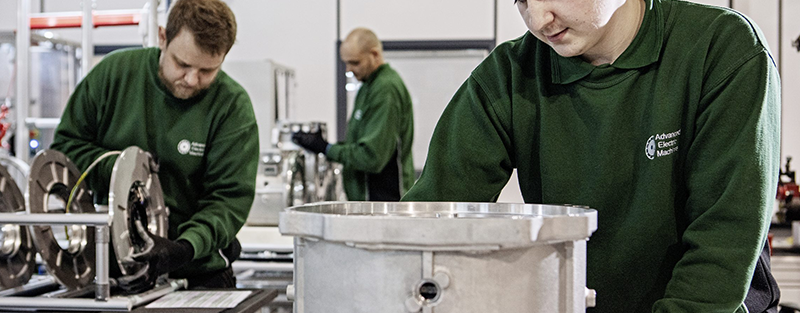As has been established, electric vehicles (EVs) are not without their drawbacks. Recycling issues and the modernisation of rare earth mining practices are big obstacles that need to be overcome in order to ensure a sustainable transition to implementing electrified transport. To compound this, any alternative solutions put forward are challenged with the need to be at least as powerful, torque dense and efficient as existing technologies.
The electric motor is a critical element of the EV powertrain, and must not be overlooked in the search for greater sustainability. For years now, the conventional permanent magnet machine has been the motor of choice for automotive manufacturers, and has been regarded as the most effective solution for electric vehicles. We have already established the environmental issues that this technology brings to the fore, and this has not been lost on vehicle manufacturers, who are now actively seeking rare-earth free alternatives.
The problem with this type of motor is not just environmental, but its relative cost and complexity. However, as some manufacturers move to rare-earth free options, they are finding themselves compromising efficiency and performance, and in some cases, their solutions are even less sustainable due to their increase in size and the increased amounts of alternative materials they use.
Step forward AEM. Our solution takes away these concerns, removing rare earth magnets from the motor design and simultaneously improving efficiency, increasing performance and lowering cost.
How? Well, we’ve replaced the rotor magnet with electrical steel, and the copper coils in the stator with highly compressed aluminium windings. As we’ve established, this has a hugely positive environmental impact, as our choice of materials means our motor is fully recyclable at end-of-life, leading to less e-waste.
The benefits of removing magnets from the motor also mean that operating risks are reduced, with no chance of short circuit currents or the high voltage spikes which can be experienced with permanent magnet motors. We can therefore ensure safer failure modes should something go wrong. In addition, our magnet-free motors have no risk of demagnetisation, as temperatures increase at higher rotational speeds, which allows for our motors to run much faster, whilst also enabling a simpler thermal management system for the vehicle.
In terms of cost, it is expensive to use rare earth magnets in motors, with each motor containing at least $200 worth of magnets alone. The volatile supply of neodymium – the main rare earth metal used in electric motors – also means there is significant scope for the price to increase much further. From February 2020 to February 2022, the cost of neodymium has risen by 312%, with one kilogram now costing more than $236, compared to $42 just two years ago. Put simply, vehicle manufacturers will find it difficult to plan the scale-up of electric vehicles in the numbers required when the cost of a key component can be so volatile.
And then there’s package efficiency. The faster a motor spins, the more power dense it can be. Typically, this faster spin will lead to problems with rare earths, but our motor is, of course, a little bit different. Without magnets, we can make the motor spin twice as fast, making it easier to package and lighter in weight. The fact that our motors are inert when not being driven enables the vehicle to coast. This has led to an increase in efficiency of up to 12% being reported by our customers over conventional permanent magnet motors throughout a typical vehicle drive cycle.
As you can see, our solution solves many of the problems that are found in producing electric motors. In order for electric vehicles to be as sustainable as possible, change needs to embraced, and if it is, then a truly green future can be a reality right now.


